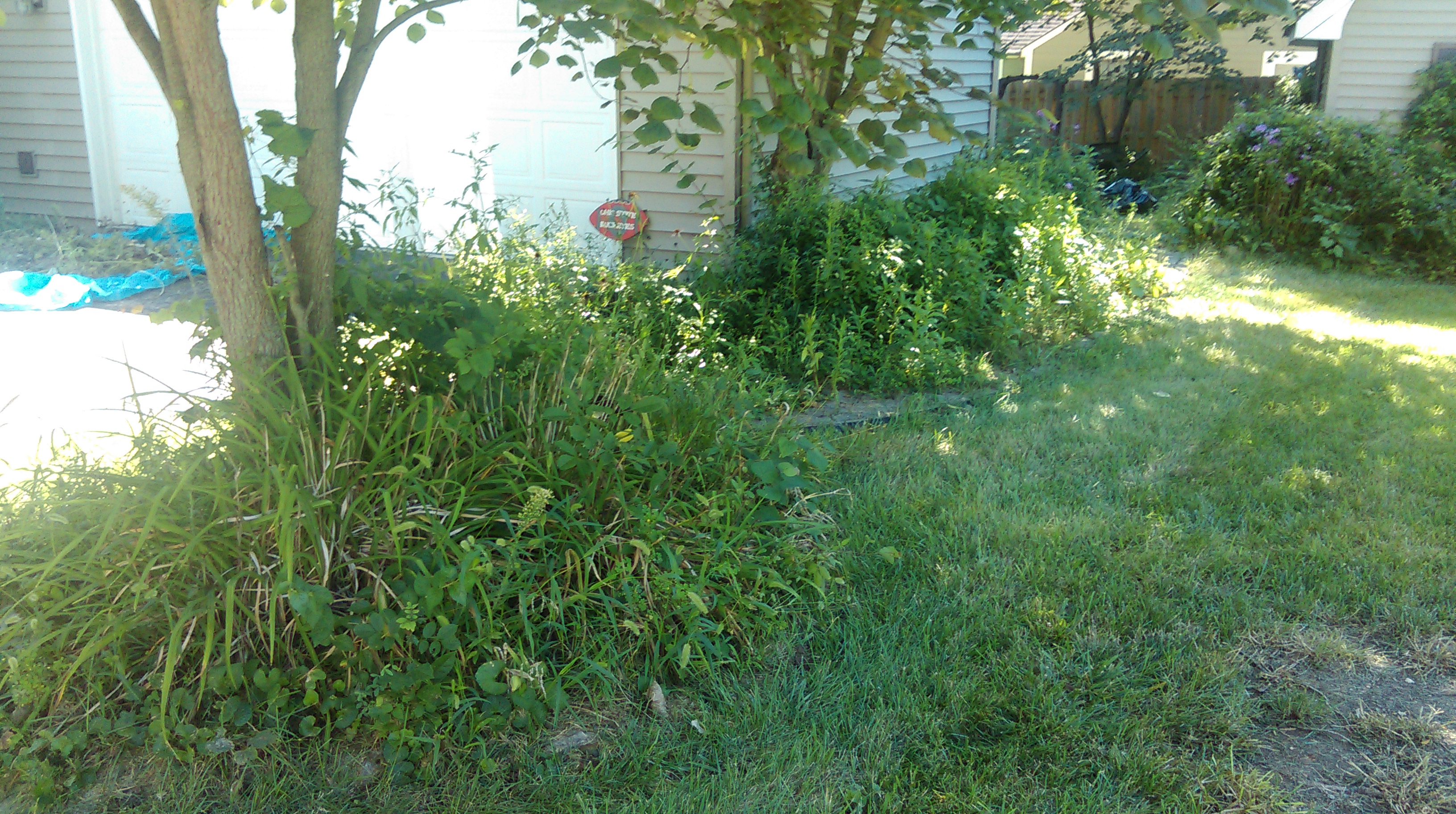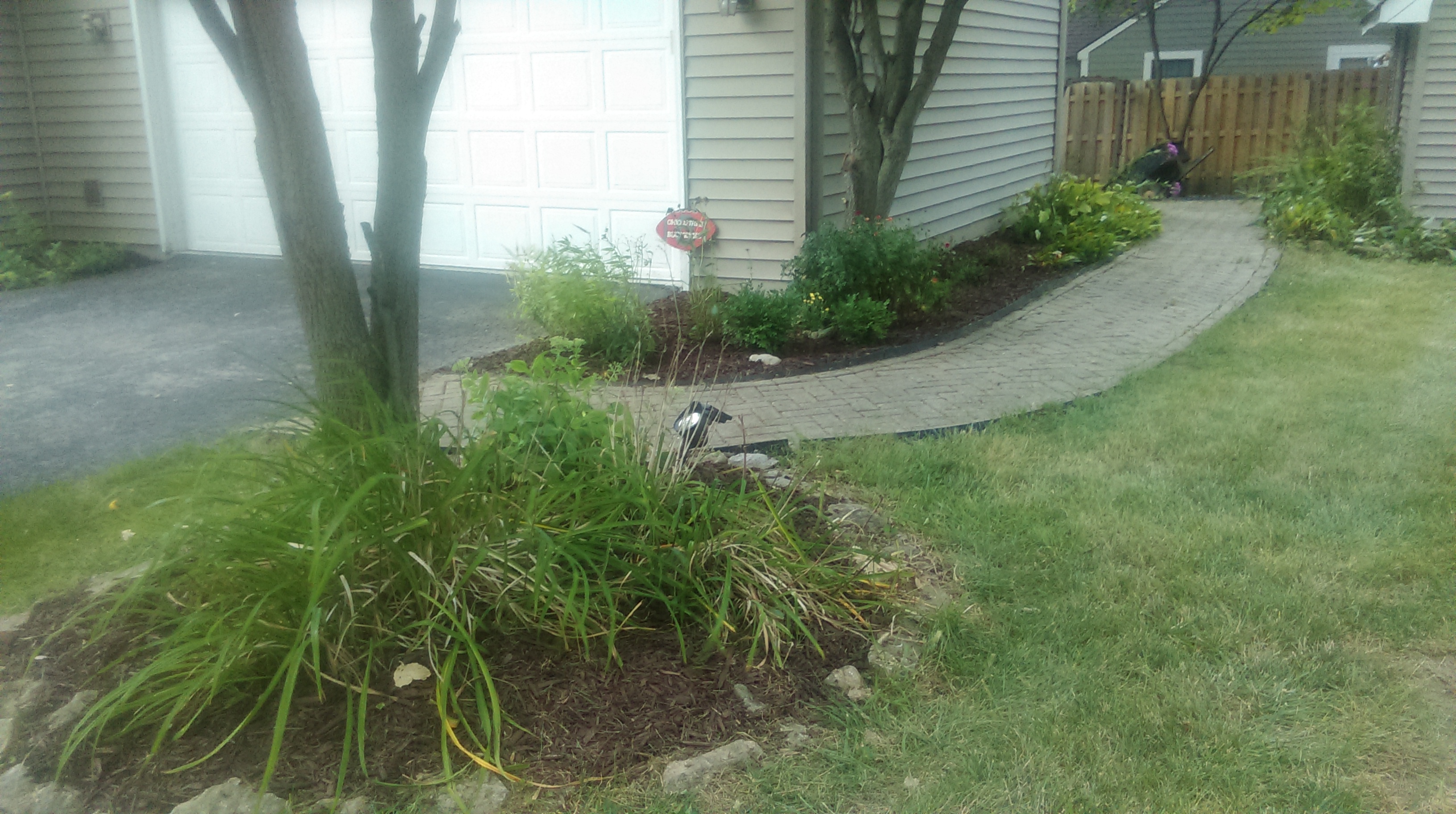
BEFORE

AFTER
1. Use a tool such as a spade or other available suitable tools to edge the bed before applying the mulch on the bed. A close to straight edge on the side of the bed closest to the barrier; the lawn, stone or walkway, and a groove separating the edge from the soil on the bed should suffice. The straight edge prevents grass roots from extending into the bed to expand the lawn while the groove will receive and collect any mulch pieces that may fall from the bed and thereby prevent them from getting over the barrier. Mulch spread in the groove should very light and should just be enough to the cover soil.
2. You may break the soil on the entire bed to aerate it but there is no substantial benefit with this activity since you may be providing viable conditions for weeds to grow. It is, however, useful to stir and aerate the soil around the plants to make the nutrients available to them.
3. Choose your preference of mulch; black, brown, red or raw wood or other.
4. Obtain the mulch in bags from your local home improvement store such as Home depot, Lowes or Menards. You may also call and order from companies, which deal in mulch processing and sale in your area, especially if you need a lot of mulch to cover a larger area of your garden beds.
5. You may request for the mulch to be delivered to your home by the home improvement store or the mulch company if you do not have enough space in your vehicle.
6. Place the mulch as close to the beds for easier movement and application.
7. Remove debris such as leaves, branches, weeds and trash from the beds to make way for the mulch.
8. If you have to carry the mulch over a long distance then a wheelbarrow may be useful, otherwise you make use a bucket or just apply directly from the bag of mulch.
9. For best mulch application, wear some garden gloves and apply the mulch with your hands. By using your hand, you will have more control as to the direction to spread the mulch and how mulch to use to fill an area.
10. Typically, 2 inches of mulch for a low weed bed and 3 inches for a high weed bed is enough to keep the soil moist as well as control the growth of weeds. One scoop of mulch with one hand placed in one small location should suffice for 1inch and so 2 inches should be 2 scoops and 3 scoops for 3 inches, but use your discretion just to make sure that all soil in the lawn is covered with the mulch.
11. Do not heap mulch around the base of a plant or a tree since this could provide conditions conducive for the growth of fungi and bacteria, which may kill the plant or tree. Mulch placed around the base of the plant should be lighter than the rest of the bed. For trees leave a gap of about 3 inches from the base and the heap of mulch.
12. Do your best to spread the mulch to avoid leaving remnants on the leaves of the plants in the beds. You may shake the plant lightly to cause the mulch to fall off, if you find any pieces of mulch material on the plants.
13. Put the mulch as close to the edge of the bed as possible to reduce the amount of mulch that falls onto the lawn or walkway to reduce cleanup effort and time.
14. Clean the area after the mulching process.

